Connectivity and AI Drive the Future of Manufacturing
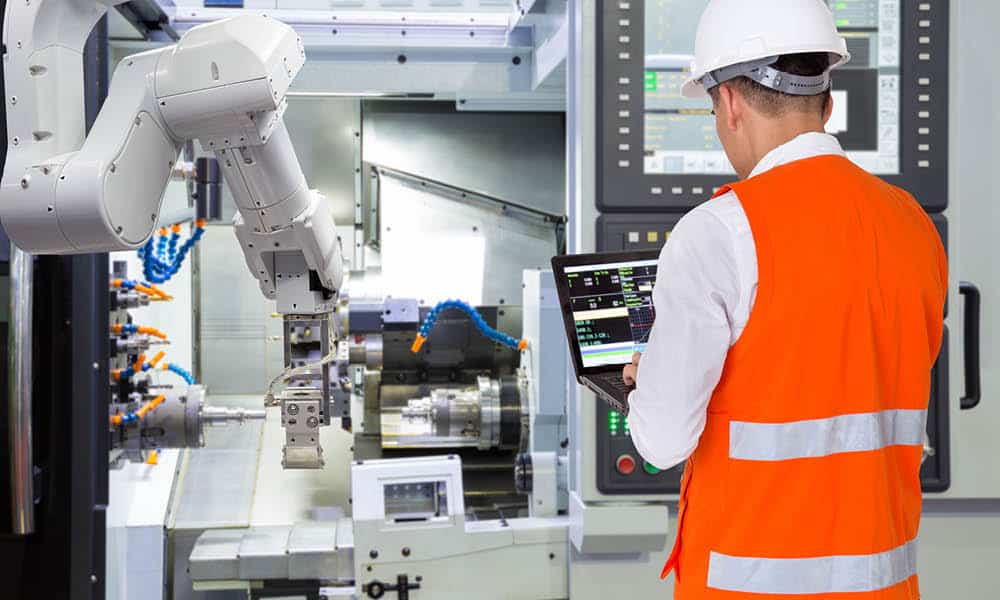
Advanced networks and intelligent technologies are creating agile, secure and high-performing smart factories.
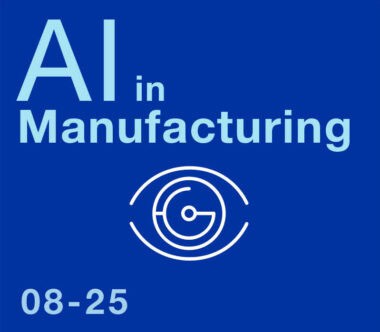
TAKEAWAYS:
● AI combined with fiber optics, 5G and edge computing is revolutionizing manufacturing.
● Real-world examples like digital twins, autonomous logistics and AI quality control show how this integration improves performance and flexibility.
● A strong framework of sensing, edge computing, hybrid networks, cloud analytics, workforce readiness and security is key to successful AI deployment in factories.
Advanced manufacturing is quickly changing from traditional assembly lines into smart, connected systems.
This shift is being fueled by the powerful combination of artificial intelligence and new connectivity technologies like fiber optics, 5G and edge computing. Together, these innovations help factories run more efficiently, flexibly and smoothly, ushering in a new age of smart manufacturing.
Connectivity: The foundation of AI-driven manufacturing
AI works best in manufacturing when it can quickly access and process massive amounts of data. That’s why strong connectivity is a key foundation for modern smart factories.
Fiber optics: The fast data highway
Fiber optic networks deliver extremely high bandwidth and low latency, which is essential to handle the large data streams from IoT sensors, machines and AI systems.
Unlike copper or wireless links, fiber offers stable, interference-free connections critical for time-sensitive manufacturing operations. This infrastructure supports centralized AI analytics, seamless inter-factory communications and cloud integration, helping smooth the flow of information and control commands.
Fiber connections also enhance security because they are less vulnerable to electromagnetic interference and eavesdropping, helping to protect sensitive manufacturing information from cyberattacks.
5G networks: Wireless freedom and scalability
While fiber serves fixed infrastructures, 5G offers wireless flexibility with multi-gigabit speeds and near-real-time responsiveness.
At industrial sites, 5G enables mobile robots, autonomous guided vehicles (AGVs) and wireless sensors to operate without the constraints of cables. In addition, 5G cellular signals travel farther and propagate better in challenging environments, which enables both workers and machines to get a more reliable connection to complete the workflow with more efficiency.
At non-industrial campuses, 5G enables dedicated airwaves that are not subject to the same interference challenges you get with unlicensed spectrum such as Wi-Fi, which means better overall performance.
The ability of 5G to create network slices means manufacturers can dedicate bandwidth and low-latency channels to mission-critical applications, helping to ensure that control signals have priority over less urgent data. This wireless freedom allows rapid reconfiguration of production lines and material flows without the expense and downtime of physical rewiring.
Moreover, 5G includes strong built-in security like encryption, authentication and network isolation, which helps protect important manufacturing processes from hacking and unauthorized access.
Edge computing: Smart processing close to the source
Edge computing tackles the delay and bandwidth challenges that come with sending all data to distant clouds.
By processing data locally on edge devices or gateways, AI models can make instantaneous decisions critical for real-time tasks such as quality inspection, machine control and safety monitoring. Edge computing also reduces network congestion and enhances data privacy, since sensitive information doesn’t always have to travel to the cloud. This hybrid approach balances the scalability of cloud computing with the responsiveness of edge processing.
Processing data at the edge minimizes exposure of sensitive operational data over networks, reducing the attack surface and enabling stronger data control and compliance with security policies.
Practical AI use cases in smart manufacturing
Digital twins for process optimization
One AT&T client, a major industrial equipment manufacturer, has successfully implemented AI combined with digital twin technology to optimize complex production processes.
Digital twins are precise virtual replicas of physical machines and factory operations, continuously fed real-time data from a dense network of sensors connected via fiber optics. AI algorithms compare digital twin simulations with actual performance, applying reinforcement learning to identify optimal process parameters. This dynamic adjustment improves yield, reduces energy use and minimizes waste.
Simultaneously, predictive maintenance models running on edge devices analyze vibration, temperature and acoustic data to forecast equipment failures. This shifts maintenance from reactive or scheduled downtime to prescriptive, condition-based interventions that minimize disruptions and extend equipment life. Centralized AI analytics platforms, supported by fiber optic connectivity, aggregate data across facilities for cross-site benchmarking and continuous improvement, fostering a data-driven, adaptive manufacturing environment.
Throughout these processes, robust cybersecurity measures such as encrypted data transmission, device authentication and continuous monitoring are critical to protecting the integrity of sensor data and AI models from tampering or cyber intrusions.
5G-enabled autonomous logistics
Another client, operating a large manufacturing plant, leverages AT&T wireless 5G connectivity to support a fleet of autonomous guided vehicles transporting components and finished goods.
The AGVs depend on reliable, low-latency communication to navigate dynamic factory layouts safely. A private 5G network employs a dedicated, local cellular network to help ensure mission-critical control signals have the coverage and capacity needed. Network slicing can take that coverage to another level by further prioritizing and partitioning resources to specific endpoints so in times of congestion, the mission critical endpoints get the resources needed. Onboard AI inference engines process sensor inputs in near real time, enabling immediate navigation and obstacle avoidance without delay.
This 5G-enabled wireless freedom allows the client to rapidly reconfigure production lines and material flows, avoiding costly rewiring or infrastructure changes. A centralized orchestration platform monitors the AGV fleet and dynamically assigns tasks to align with production schedules.
This setup highlights how combining AI with 5G connectivity removes physical constraints, enhances scalability and increases operational flexibility in manufacturing logistics.
The private 5G network environment also offers enhanced security by isolating critical communications from public networks, implementing strict access controls and enabling real-time threat detection to prevent unauthorized interference with autonomous vehicle operations.
AI-driven quality control at the edge—and in the cloud
A manufacturer specializing in high-precision components has revolutionized quality control by deploying AI-powered vision inspection systems integrated with edge and cloud computing.
High-speed industrial cameras capture tens of thousands of images per hour, transmitting them via fiber optics to edge servers where AI models perform real-time defect detection. These deep learning models help identify surface imperfections, dimensional deviations and assembly errors with accuracy surpassing human inspectors.
The AI systems continuously learn and adapt to new defect patterns emerging on the production line, helping to ensure consistent precision detection as product designs evolve. When defects are detected, immediate automated feedback loops remove faulty items and alert operators, reducing scrap and rework.
Meanwhile, aggregated data is sent to cloud platforms for long-term analytics and AI model retraining. This hybrid edge-cloud architecture balances the need for ultra-low latency responses with scalable training and analytics, underscoring the critical role connectivity plays in intelligent, responsive quality assurance.
Securing both edge and cloud environments with encryption, multi-factor authentication and compliance with data privacy standards helps ensure that sensitive product quality data remains protected while enabling effective AI-driven insights.
A framework for AI and connectivity integration
An effective framework for deploying AI and connectivity in manufacturing could include:
- Sensing and data acquisition: A dense array of diverse IoT sensors—measuring vibration, heat, light and sound—form the data foundation. These connect through a mix of fiber optics for fixed, high-speed links and 5G for wireless flexibility. Proper sensor calibration helps ensure data quality.
- Edge computing layer: Rugged edge devices run AI models locally for tasks needing fast response. Containerized AI allows easy updates and scaling for real-time detection, control and inspection without relying only on the cloud.
- Connectivity infrastructure: A hybrid network blends fiber optics’ high bandwidth and low latency with 5G’s mobility and scalability. Network slicing and Quality of Service (QoS) prioritize critical traffic to keep safety and control systems running smoothly. Security protocols like encryption and continuous monitoring protect data from cyber threats.
- Cloud and centralized analytics: Cloud platforms gather data from multiple edges for advanced AI training, trend analysis and factory benchmarking. They offer easy-to-use dashboards and decision tools to help operators and managers.
- Integration and orchestration: AI systems connect seamlessly with Manufacturing Execution Systems (MES), Enterprise Resource Planning (ERP) and supply chain software for closed-loop automation. AI insights automatically adjust processes or alert staff, while humans oversee and improve operations.
- Ethical and workforce considerations: Transparent AI models build trust, especially for safety-critical uses. Training programs boost employee skills in AI and data to prepare them for working alongside AI. Strong data governance helps ensure compliance and privacy.
Strategic benefits and the future of smart manufacturing
The convergence of AI and connectivity goes beyond incremental improvements to fundamentally reshape manufacturing capabilities:
- Operational efficiency: Predictive maintenance and process optimization reduce downtime and resource use.
- Quality excellence: Real-time adaptive vision inspection improves product consistency and reduces waste.
- Logistical agility: Wireless 5G helps enable flexible material handling and rapid factory reconfiguration.
- Supply chain resilience: Integrated AI analytics provide end-to-end visibility and proactive disruption management.
- Workforce empowerment: Collaborative AI tools augment human expertise, fostering innovation and upskilling.
For leaders, adopting AI and connectivity as linked strategies is key.
Building these technologies into unified digital systems tailored to each factory’s needs will be vital for staying competitive. As these technologies evolve, future smart factories will use even smarter AI, quantum computing and next-gen connectivity to create truly autonomous, self-optimizing manufacturing.
Making sure these future systems have security built in from the start is crucial to protect valuable knowledge, keep operations running and build trust in fully autonomous factories. M
About the Author:

Ande Hazard is Vice President of Manufacturing, Transportation and Financial Services solutions, AT&T Business
How the C-suite Can Drive Results for AI Success

For companies to achieve truly transformative generative AI, they need six key pillars.

TAKEAWAYS:
● Your organization likely has far more GenAI ideas than available resources; a vital component is a control tower for oversight, focus, and governance.
● Data maturity, strategic alliances, and talent are also essential elements of a forward-thinking AI strategy, beyond the technology itself.
● Leaders must resist the impulse to fit GenAI into existing processes and business models and instead reimagine them entirely.
You likely have hundreds of generative AI (GenAI) use cases and may have seen some early success with prototypes. Perhaps you also have the sandboxes for controlled experiments, buy-in from key executives, and a healthy budget for testing and development. Yet, after a year, you may find that you are still struggling to move quickly enough to mitigate competitive risks and confidently turn possibilities into opportunities—to truly transform your business.
Following another strangely resilient yet uncertain economic year, C-suites and boards in the US expect to see cost savings, greater efficiencies, and added revenue from GenAI implementation, according to a recent EY AI survey. To some extent, GenAI infrastructure and processes resemble those used for regular artificial intelligence (AI), which some companies have leveraged for decades. However, these often involve more basic automation projects, and important distinctions regarding GenAI must be addressed:
- The sourcing, management, and preconditioning of data vital for training GenAI algorithms and creating outputs for different stakeholder groups;
- Ethical frameworks that provide guardrails for a technology whose upsides and downsides are not yet fully defined;
- Partner ecosystems to enable organizations to cost-effectively keep pace with the future and gain additional data sets to enrich their large language models and knowledge repositories; and
- Change management for employees who are concerned about how GenAI will impact their careers and responsibilities.
Success can be found in the narrow, overlapping center of these functional areas—and the payoff for those who reach the center first can be enormous. We see that truly transformative GenAI capabilities are built on six pillars.
Pillar 1: Establish an AI Control Tower
A control tower effectively oversees use cases and investments across the organization, helping to set priorities and avoid duplicated efforts.
Voluminous GenAI use cases all compete for time, attention, and resources. Many companies are wasting money on duplicated efforts, some of which exist in shadowy corners without proper governance, creating potential reputational risks. Companies may not even know where all their AI models are deployed. This blind spot will become increasingly threatening as regulations take shape in the US and globally, particularly impacting industries such as financial services, energy, and health care.
As a catalyst for the new age of GenAI, a control tower—not individual functions—relentlessly focuses on deriving value from AI and GenAI. This approach ensures that time, money, and effort are spent wisely, efficiently channeling enthusiasm in positive directions while establishing oversight and guardrails. Many AI and GenAI solutions exhibit common patterns and can benefit from reusable assets that accelerate time to value and reduce costs. Without a control tower, different groups across an enterprise risk building very similar solutions from scratch for various use cases. The control tower effectively governs organizational investments and value creation by identifying patterns across various use cases that align with business needs and prioritizing the development of GenAI solutions.
Pillar 2: Reimagine Future Business Models and Functions
C-suites are increasingly focused on how technology integrates into current operations and business models rather than how it will redefine the future.
It’s natural to try to fit a new advancement into existing frameworks. During the Industrial Revolution, it took time for planners to redesign cities for automobiles instead of horses, and to rethink manufacturing plant designs after steam engines became obsolete. GenAI is poised to be equally transformative.
Consider procurement. You could automate the first five steps of reviewing requests for proposals: a GPT generates a content comparison that highlights which proposals meet the requirements and how they differ, with references pointing to page numbers within each document. Instead of spending four weeks on redlining, you could reduce this to one week—a significant gain in efficiency for a process that, while important, is not core to your organization’s mission.
The truly transformative impact lies in completely reimagining front office operations, rather than merely streamlining back office processes. GenAI unlocks new products, services, and business models that can easily be overlooked if approached with a robotic process automation mindset. This reimagining may include creating new products and features enabled by GenAI, offering them through pay-as-you-go service subscription models, selling directly to consumers instead of via intermediaries, and leveraging consumer data for insights—potentially even selling that data as a separate revenue stream. Amidst all this change, one timeless truth remains: if you don’t innovate first, your competitors will.
Pillar 3: Ensure Confidence in AI
The initial excitement surrounding GenAI may fade during the first few sprints after deployment, as the transformative potential confronts the messy reality. Continuous testing and governance are essential.
Does your GPT provide perplexing answers, veer down incorrect paths, or even “hallucinate”? Does it have access to the right amount of data—or perhaps too much?
In control towers, processes and rules must govern the creation and maintenance of algorithms and models. This includes mitigating bias, enforcing fairness, and ensuring explainability and transparency from the moment the AI model is created through its ongoing management. From the outset, data security and integrity are crucial. Often, the type of data required for GenAI differs from that used in typical AI; it does not exist in neat rows and tables but rather in chat logs, emails, surveys, and more, necessitating far greater preconditioning.
Leaders in a control tower also must define their ethical compass concerning GenAI and its alignment with company values. As a consumer, would you feel better or worse knowing that a GenAI model was guiding your investment decisions or healthcare diagnoses? Organizations must address these questions before deploying GenAI, not after. EY leaders have oriented the company’s AI efforts around fairness, accountability, and reliability. These principles are not just words; each corresponds to metrics that measure the confidence of any particular solution we deploy. The EY organization, ServiceNow, and others are assisting companies in defining, enforcing, and testing their AI principles.
It may seem paradoxical, but keeping humans in the loop is essential for building confidence in GenAI. Are the individuals who will ultimately be affected by GenAI included in its design, development, testing, and deployment? One effective approach is reinforcement learning: people play a crucial role in training the models and evaluating the outputs of a GenAI chatbot or algorithm, helping it discern what is useful and what is not. Without this involvement, the efficacy of the models diminishes. Furthermore, it is vital to have mechanisms in place to allow these individuals to flag issues and provide feedback on what isn’t working well, which responses are incorrect, and which outcomes do not align with business needs.
GenAI algorithms and outputs must undergo rigorous scrutiny. Consider the chatbots designed for specific purposes that can be manipulated into generating hate speech, disclosing intellectual property, or informing customers about nonexistent company policies. Algorithms tailored for particular tasks can also evolve in ways that may appear mysterious to outsiders, lacking “explainability.” Red teams—resources that assume adversarial roles to challenge AI—are crucial for validating these efforts through independent monitoring.
The EY.ai Confidence Index provides a framework to help organizations navigate these pitfalls, enhancing the reliability and explainability of responsible AI to support better decision-making and more efficient operations.
Pillar 4: Address Talent and Tech Gaps
The buzz surrounding GenAI may wane in the first few sprints after deployment, as its transformative potential meets the complexities of reality. Continuous testing and governance are essential.
A key takeaway from launching our internal GenAI model to 400,000 EY employees was the importance of providing training alongside tools. This finding was further reinforced by the results of the EY AI Anxiety in Business survey, which revealed that 80 percent of employees would feel more comfortable with AI if they received training, yet 73 percent reported not receiving the necessary coaching. The survey indicates that employees are already using these tools at work, and desire a deeper understanding of responsible AI practices.
What will help people feel more comfortable using AI at work?
On the technology side, many organizations grapple with a familiar question: Should I build what I need, buy it, or pursue a combination of the two—such as augmenting existing software or building on established platforms using my intellectual property? There’s no substitute for debate and planning, even in an unsettled technology landscape. You might decide to hold off on investing in financial GenAI applications because you believe your current enterprise resource planning systems will eventually incorporate that functionality. However, it may be worthwhile to pursue GenAI tools customized to your specific needs through the product development lifecycle. This discussion is not solely about identifying gaps exist but also about the methods for addressing them.
Pillar 5: Develop an Ecosystem of Alliances
AI is a complex technology that impacts every level of an organization. To stay ahead of the curve—or even to reach the median level of maturity—organizations need to establish partnerships.
Many organizations tend to focus on yesterday’s teams while considering how they will tackle tomorrow’s challenges. It’s important to recognize that a different workforce and new ways of thinking will be necessary to address business needs beyond today’s core operations. A rapidly changing world demands new solutions, fresh data sets, and capabilities that few companies can provide internally. Currently, plug-and-play and single-point systems that automatically generate solutions based on unique needs and data sets don’t exist; features that seemed innovative last year can quickly become outdated.
A robust ecosystem of alliances enables your company to quickly and flexibly fill those gaps while adapting to the evolving landscape. Defining a strategy for what you need and how to expedite it is crucial—whether your organization is a pharmaceutical giant using highly sensitive drug trial data or a consumer products company seeking greater automation for its service agents. Is proprietary data your core market differentiator that you will use to train a model? This question is vital, as the strategic path becomes clearer if your proprietary data provide a competitive advantage.
Consider alliances in four categories:
- Technology partners: Rely on them for guidance, innovation, and even experimental funding.
- Academics: These partners can be invaluable for hypothesis testing, research, guidance, and thought leadership.
- Professional services organizations: They can help you navigate the entire landscape, identify strategies and sources of value, and even assist in building solutions to capitalize on that value.
- Data partners: Your sector as a whole may benefit more from a data consortium, particularly in areas that do not specifically differentiate your organization. (For example, consider patient data across health systems, while being mindful of privacy regulations.)
Pillar 6: Drive Focused Data Maturity to Be AI-Ready
Data quality is more important than ever; however, if you wait until all your data are perfect and trusted before testing your use cases, you may be waiting indefinitely.
Focused data maturity is key: not every piece of data needs to be pristine to be included in your GPT. This distinction is crucial as we navigate regulations.
You need an enterprise-wide, fit-for-purpose data strategy that is governed tightly by how data will be used. For example, if you plan to have a GenAI application that customers will use to obtain information about products, that product data will need to be highly managed and governed, while other data may fall outside that scope. Your data strategy should guide your investments effectively, targeting your highest priorities rather than attempting to “boil your data ocean.” Here are the key needs to address:
- Accessibility at scale: A high volume of historical information should be available for exploration and production use with fast processing.
- Visibility: The ability to understand the data, both technically and in a business context, while easily locating data across systems and sources.
- Timeliness: Up-to-date data files with reasonable data latency, providing what’s needed for each use case (for example, in real time or in batches).
- Openness: Support for multiple file types and formats (including text, numbers, and images) using consistent tools across the platform.
- Reliability: Data pipelines that minimize breakage, limit the amount of missing data, and maintain consistency from one update to the next.
- Expansiveness: Consistency across the global enterprise, enabling connections between customers and products across different regions and business units.
- Trust and security: The ability to execute AI use cases responsibly with data that are secured and accessible only to those who need it.
Summary
With an AI control tower, you empower everyone to contribute while designating one group to drive focus, oversight, and business alignment for reusable assets, all while emphasizing responsible AI practices. Technology is just one piece of the puzzle: you also must upskill personnel, secure alliance partnerships, and prepare your data for AI. Never lose sight of how you must reimagine your organization for tomorrow, not just today. M
About the authors:

Traci Gusher is EY Americas AI and data leader.

Matthias Loh is EY Americas FSO technology consulting leader.
MLC Announces 2025 Manufacturing Leadership Award Winners

The NAM’s digital transformation division has announced the winners of this year’s Manufacturing Leadership Awards, accolades given to the most outstanding companies, teams and individuals leading manufacturing into the next era.
What’s going on: The Manufacturing Leadership Council named Celanese as its Large Enterprise Manufacturer of the Year, Pure & Gentle, Inc. as the winner in its Small-Medium Enterprise Manufacturer of the Year category and Besu Alemayehu of Merck & Co., Inc. as its 2025 Manufacturing Leader of the Year.
- The winners were announced last week at the MLC’s 2025 Manufacturing Leadership Awards Gala in Marco Island, Florida. It was the culmination of Rethink: Accelerating Digital Transformation in Manufacturing, the organization’s flagship event focused on strategies that advance digital transformation in manufacturing operations.
Why they were picked: Global chemistry company Celanese was chosen owing to its many achievements in digital transformation, including an artificial intelligence-powered digital platform that increases employee productivity and improves decision-making.
- Personal care product manufacturer Pure & Gentle won in its category for use of digital technology to monitor and boost sustainability, as well as for its creation of a work culture that fosters high levels of employee engagement.
- Merck Senior Vice President of Digital Manufacturing and Chief Digital and Technology Officer Alemayehu was recognized for leading digital initiatives that have increased business value and for partnering with senior leadership across the company in key functions.
There’s more: The award ceremony included a memorial tribute to former Lexmark Chief Sustainability Officer John D. Gagel, also a former member of the MLC Board of Governors, recognizing his lasting contributions to manufacturing and transformational leadership.
Our take: “The winners of the Manufacturing Leadership Awards represent the kind of bold and innovative thinking that will propel our industry into the future,” said NAM President and CEO Jay Timmons.
- “Every project and individual recognized in the Manufacturing Leadership Awards represents movement toward a future state of Manufacturing 4.0,” said MLC Founder, Executive Director and Vice President David R. Brousell.
Read more: See a full list of this year’s winners and finalists here.
Merck, Celanese and Pure & Gentle Named Top Winners in Manufacturing Leadership Awards Competition
Marco Island, Florida – The Manufacturing Leadership Council, the digital transformation division of the National Association of Manufacturers, last night announced the winners of the annual Manufacturing Leadership Awards. The MLC named Merck & Co. Senior Vice President, Digital Manufacturing and Chief Digital and Technology Officer Besu Alemayehu the 2025 Manufacturing Leader of the Year. By leading digital initiatives that drive business value and partnering with senior leaders across key functions, Alemayehu has guided Merck’s manufacturing operations toward a digital-first business model successfully.
The MLC named Celanese the Large Enterprise Manufacturer of the Year in recognition of its achievements in digital transformation, including an AI-powered digital platform that boosts worker productivity and improves decision-making. The MLC named Pure & Gentle the Small/Medium Enterprise Manufacturer of the Year for its use of digital technology to track and improve sustainability practices and for excellence in developing a high-performing business culture with a high level of employee engagement.
“The winners of the Manufacturing Leadership Awards represent the kind of bold and innovative thinking that will propel our industry into the future,” said NAM President and CEO Jay Timmons. “Manufacturers are using the latest cutting-edge technologies to strengthen our economy, improve business processes and, ultimately, better the lives of Americans across the country. These leaders understand the vast potential of Manufacturing 4.0 technologies, and we are proud to recognize them for their best-in-class leadership.”
The award ceremony also featured a memorial tribute to John D. Gagel, former chief sustainability officer at Lexmark and former member of the MLC Board of Governors, in recognition of his lasting contributions to the industry and transformational leadership.
The gala took place the evening of June 18 at the JW Marriott Marco Island Beach Resort and was the closing event for Rethink: Accelerating Digital Transformation in Manufacturing, the MLC’s flagship event on strategies to advance digital transformation in manufacturing operations.
“Every project and individual recognized in the Manufacturing Leadership Awards represents movement toward a future state of Manufacturing 4.0,” said MLC Founder, Executive Director and Vice President David R. Brousell. “Digital has become a must-have, and the cohort that is demonstrating digital leadership today will be reaping the competitive rewards tomorrow.”
Manufacturing Leadership Award finalists and winners are determined by a distinguished panel of judges with significant industry expertise and experience. The judges also conferred honors on the following category winners:
Artificial Intelligence Vision and Strategy
Celanese
Business Model Transformation
ArcelorMittal
Collaborative Ecosystems
Humtown
Whirlpool
Digital Supply Chains
Flex
Engineering and Production Processes
GM Defense
Enterprise Integration and Technology
Celanese
General Motors
Operational Excellence
Thermo Fisher Scientific
Sustainability and the Circular Economy
Niron Magnetics
Transformational Business Cultures
Pure & Gentle
Digital Transformation Leadership
Besu Alemayehu, Merck
Jim Wetzel, NxGen Group
Next-Generation Leadership
CisLee Trost, CertainTeed
Women in Digital Transformation
Giovanna Benetti, IBM
Renee Sherry, General Motors
Manufacturer of the Year – Small/Medium Enterprise
Pure & Gentle
Manufacturer of the Year – Large Enterprise
Celanese
Manufacturing Leader of the Year
Besu Alemayehu, Merck
The 2026 Manufacturing Leadership Awards will open to nominations on Sept. 15, 2025. For more information about the awards, visit https://manufacturingleadershipcouncil.com/leadership-awards/.
-MLC-
Founded in 2008 and now a division of the National Association of Manufacturers, the Manufacturing Leadership Council’s mission is to help manufacturing companies transition to the digital model of manufacturing by focusing on the technological, organizational and leadership dimensions of change. With more than 2,500 senior-level members from many of the world’s leading manufacturing companies, the MLC focuses on the intersection of advanced digital technologies and the business, identifying growth and improvement opportunities in the operation, organization and leadership of manufacturing enterprises as they pursue their journeys to Manufacturing 4.0.
Welcome New Members of the MLC June 2025
Introducing the latest new members to the Manufacturing Leadership Council

Learn more about MLC membership.

Keith Belevender
VP Operations, HSEQ (Americas)
SAF-Holland
![]()
https://safholland.com/us/en/
![]()
https://www.linkedin.com/in/keith-belevender-1831981/

Ger Carmody
Senior Vice President, Global Pharmaceutical Operations & Operational Excellence
Merck & Co., Inc.
![]()
https://www.merck.com/
![]()
https://www.linkedin.com/in/ger-carmody-62766516/

Josh Chou
Chief Supply Chain Officer
McCormick & Company

https://www.mccormick.com/
![]()
https://www.linkedin.com/in/josh-chou-47a1897/

Ty Hutchens
COO
Hutchens Industries

https://www.hutchensindustries.com/
https://www.oemoffhighway.com/drivetrains/press-release/10733989/hutchens-industries-announces-personnel-changes

Hugo Alberto Gomez Sierra
CEO
Condumex

https://condumexinc.com/
![]()
https://www.linkedin.com/in/hugo-gomez-a2370011/

Mikell Taylor
Chief Autonomous Robotics Technologist
General Motors

https://www.gm.com/
![]()
https://www.linkedin.com/in/mikelltaylor/
Decarbonizing Scope 3 Emissions through Circular Strategies

Circular economy strategies offer potential benefits and opportunities to decarbonize scope 3 GHG emissions.

TAKEAWAYS:
● As companies accelerate their decarbonization journeys, Scope 3 emissions often present a challenge.
● Although Scope 3 is often the largest portion of a company’s carbon footprint, Scope 3 decarbonization levers are more difficult to identify and implement.
● Circular economy has emerged as an opportunity for the activation of meaningful decarbonization levers across the value chain.
Scope 3 greenhouse gas emissions originate from assets that businesses use that are not directly owned or controlled by the organization. Also known as value chain emissions, they emerge from corporate supply chains, transportation, and product usage or disposal. For many businesses, Scope 3 emissions represent the largest source of GHG emissions, averaging 75% of total emissions, according to CDP, a global non-profit that runs an independent environmental disclosure system for companies, capital markets, cities, states and regions. However, measuring and reducing these emissions pose significant challenges for organizations due to unreliable data and limited operational control over activities across their extended value chains.
Despite these hurdles, the pressure for companies to accurately calculate, disclose and reduce Scope 3 emissions has intensified. Key drivers include recent regulations such as the European Union’s Corporate Sustainability Reporting Directive (CSRD), the International Sustainability Standards Board (ISSB) and actions being taken in California and elsewhere. Companies are increasingly focused on submitting science-based reduction targets and credible climate transition plans, which has led to greater attention on Scope 3 emissions.
The Greenhouse Gas Protocol defines 15 categories of Scope 3 emissions; this article focuses on categories 1 (purchased goods and services), 11 (use of sold products) and 12 (end-of-life treatment of sold products), highlighting opportunities for GHG reduction through circular economy initiatives.
The Circular Economy’s Potential
The circular economy is a transformative approach that reimagines business interactions to create long-term value while promoting economic growth and ecological impacts. Circular strategies have significant decarbonization potential, with some models estimating a 56% reduction in emissions compared to traditional practices. Additionally, it is estimated that the circular economy could unlock $4.5 trillion in economic opportunities by 2030. However, its potential remains largely untapped, particularly concerning Scope 3 emissions.
Category 1: Purchased goods and services
Category 1 emissions encompass all upstream emissions from the production of products purchased by a company. A major challenge in managing these emissions is obtaining reliable supplier-specific data.
For companies using spend-based or average-data methodologies, the primary decarbonization lever is reducing spending with high-emitting suppliers. Those with access to supplier-specific data can engage suppliers directly to reflect emissions reductions across the value chain.
Circular strategies for decreasing Scope 3 Category 1 emissions:
- Circular procurement: This strategy seeks to close energy and material loops in supply chains while minimizing waste. Companies can prioritize suppliers that demonstrate circularity, such as those using circular design principles or offering take-back schemes. By incorporating circularity metrics in supplier evaluations, companies can shift spending toward suppliers with better circular performance.
- Supplier engagement: Engaging suppliers is crucial for driving meaningful change across the value chain. Companies can enhance supplier capacity through education on circular design principles and collaboration on circular material R&D. This approach can help reduce emissions from new product production and lower the carbon intensity of manufacturing processes.
Category 11: Use of sold products
Category 11 emissions arise from the use of goods and services sold by a company, including Scope 1 and 2 emissions of end users. These emissions can be divided into direct and indirect use-phase emissions, with the majority stemming from direct use.
Circular strategies for Category 11 emissions:
- Enhancing product efficiency: Improving product efficiency can be achieved through lightweighting, simplifying materials, and enhancing energy efficiency. For example, using lighter materials in automobiles improves fuel efficiency and reduces emissions.
- Utilizing renewable energy: Supporting the transition to clean energy sources, such as electrification of vehicles, can significantly reduce emissions. Electric vehicles (EVs) produce lower emissions, especially when powered by renewable energy. Electrification of passenger vehicles has increased over the last few years with a projected 20 million EVs by 2030.
- Modular design: Designing products for easy repair and remanufacture extends their lifecycle. Modular design allows for upgrades and customization, which can reduce energy consumption over time.
Category 12: End-of-life treatment of sold products
Category 12 emissions result from the disposal and treatment of sold products at the end of their life. To reduce these emissions, companies can focus on two main levers: reducing the mass of sold products and increasing the proportion of waste that is recycled.
Circular strategies for Category 12 emissions:
- Reuse: Companies are exploring reusable packaging to decrease the mass of materials sent to landfills. Standardized containers can facilitate this strategy, aligning with product-as-a-service models.
- Recycling: Implementing recycling strategies can redirect waste from landfills to recycling streams. The automotive industry, for example, has established take-back programs for used cars and collaborates on recycling lithium-ion batteries.
Looking ahead to a low-carbon economy
Circular strategies provide effective decarbonization levers across Scope 3 categories 1, 11 and 12. As pressure mounts for companies to decarbonize, strategies such as reuse, remanufacture, supplier engagement and enhanced modular design offer actionable steps to navigate the “Scope 3 dilemma.” By leveraging these strategies, businesses can contribute to a low-carbon economy while unlocking new opportunities for growth. M
The views reflected in this article are the views of the author(s) and do not necessarily reflect the views of Ernst & Young LLP or other members of the global EY organization.
About the author:

Mark Weick is Managing Director, Climate Change and Sustainability Services, at Ernst & Young LLP
Building a Practical Sustainability Management System for Manufacturers
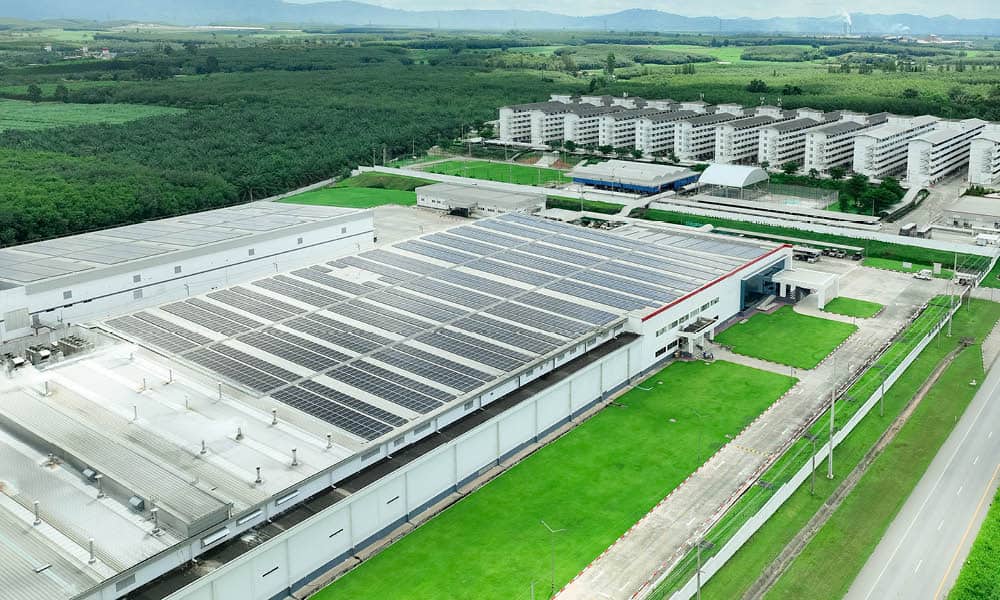
Success with sustainability requires a new, strategic way of thinking about and managing the business.

TAKEAWAYS:
● Becoming a sustainability-driven organization requires more than reports and projects. A new operating model is needed that provides workers with real-time information, guidance, and feedback.
● The need for sustainable manufacturing is accelerating and those who fail to adapt risk losing out in the marketplace.
● Sustainability needs to be embedded into daily operations and decision-making across the organization.
Sustainability is no longer a niche initiative or compliance obligation; it is a strategic imperative and a core approach to how a company is run. Yet, for many manufacturers, especially small to mid-sized enterprises (SMEs), sustainability can feel abstract or even inaccessible. The Sustainability Management System (SMS) framework was developed to address this challenge directly: to provide a clear, practical, and actionable approach for manufacturing leaders to embed sustainability into the heart of their business operations.
The Challenge: Bridging Strategy and Action
Despite growing interest in Environmental, Social, and Governance (ESG) initiatives and mounting pressure from investors, customers, and regulators, many manufacturers struggle to move from intent to execution. Traditional models like ISO 14001 provide environmental management foundations, and ESG reporting frameworks help with disclosures, but neither fully address the totality of how the business operates — from the factory floor and R&D labs to suppliers and customers.
The SMS framework, developed by the author of this article, is designed to fill that gap. Inspired by the structure of a Quality Management System (QMS), it incorporates sustainability into operational management in a way that is:
-
- Integrated with existing workflows
- Tailored to manufacturers
- Focused on continuous improvement
- Grounded in business outcomes.
The Core Philosophy of SMS
At its heart, the SMS emphasizes that sustainability is not an add-on; it is a way of managing the business differently. Instead of viewing sustainability as a set of isolated projects or compliance hurdles, SMS positions it as a strategic lens through which every decision is evaluated. This shift enables manufacturers to:
- Identify risks and opportunities across the value chain
- Strengthen relationships with employees, customers, and communities
- Innovate more effectively through circularity and resource efficiency
- Align with evolving global standards and stakeholder expectations
To achieve this, the SMS follows a structured approach that builds from foundational readiness to systemic transformation.

SMS Structure: From Foundations to Maturity
The SMS is organized around five key phases:
- Strategic Commitment: Aligning leadership and articulating a sustainability vision linked to business objectives. Without clear commitment, change remains superficial.
- Cultural Readiness: Assessing and shaping the organizational mindset required for lasting transformation. Tools such as maturity models and values assessments can help uncover hidden resistance or enablers.
- System Design: Developing governance structures, roles, and processes that embed sustainability into daily operations, similar to how QMS, MES, or ERP systems are implemented.
- Execution and Improvement: Using continuous improvement cycles to pilot, scale, and refine sustainability initiatives. This includes tracking KPIs that go beyond compliance to include innovation, resilience, and employee engagement.
- External Engagement: Connecting the SMS to broader ecosystems, certifications (e.g., COSIRI), and reporting frameworks to enhance credibility and impact.
This structured path supports organizations in moving from reactive compliance to proactive leadership.
Integrating COSIRI: Measuring What Matters
To support transparency and measurement, the SMS incorporates the COSIRI (Cognitive Sustainability Readiness Index) framework as a benchmarking tool. COSIRI provides a robust, nine-pillar and 24-dimension structure to evaluate sustainability maturity across multiple domains, including strategy, people, innovation, and operations.
This integration allows companies to:
- Identify priority focus areas
- Track progress over time
- Communicate clearly with stakeholders
- Align internal capabilities with external expectations
COSIRI is particularly valuable because it is designed for manufacturers and resonates with the realities of industrial operations.

The Handshake Model: Reframing Change
A key insight emerging from this work is the need to move beyond traditional change management approaches. Too often, organizations rely on the “stick” (punishment) or the “carrot” (incentives) to drive sustainability adoption. The SMS proposes a third approach: the “handshake.”
The handshake represents a mutual commitment to shared value. It reflects the idea that change is not something we do to people, but something we do with them. By building a sense of co-agency, companies foster:
- Trust
- Engagement
- Purpose-driven behavior
- Long-term cultural alignment
This shift is essential in a BANI (Brittle, Anxious, Nonlinear, Incomprehensible) world where resilience depends on adaptability and connection. For example, implementing solar panels can be moved from a facilities project to a values-driven, community project. Instead of defining the project as “solar panels” it can be defined as “become net-positive energy consumers.” Framing the goal as becoming net-positive invites new relationships with the local community — for instance, by donating excess energy to those in need.
Why This Matters Now
Global trends in policy, consumer behavior, and investment are rapidly accelerating the need for sustainable manufacturing. At the same time, manufacturers in the United States face unique risks. Many leaders from growth markets around the world are embracing a new calculus for prosperity, one grounded in safety, peace, and shared well-being. If U.S. manufacturers fail to adapt, they risk being outpaced not just on cost or quality, but on relevance.
This is not a call for idealism, but for strategic realism. By embedding sustainability into how decisions are made, manufacturers can unlock innovation, strengthen their competitive advantage, and ensure long-term resilience.
Conclusion: A Call to Leadership
The Sustainability Management System is not a silver bullet. It is a toolset, a mindset, and a framework for doing business better. It gives manufacturing leaders a path forward that is both visionary and grounded in the practical realities of day-to-day operations.
For those ready to lead, the SMS offers a way to bridge the gap between good intentions and great results. M
About the author:

Steven Moskowitz, Ph.D. is Founder & Principal Advisor @ Industry 4ward LLC and Senior Content Director at the Manufacturing Leadership Council. He can be reached at: [email protected]
Dialogue: Digital Culture Begins with Executive Intent

CESMII’s John Dyck shares why manufacturers must align culture, improve data quality and bridge IT and OT with clear intentionality.
Penelope Brown, MLC: Hello, everyone, and welcome to this month’s Executive Dialogue. Joining us today is John Dyck, the CEO of CESMII—the Smart Manufacturing Institute, and also a member of MLC’s Board of Governors.
You may have seen John on stage at an MLC event, or at any other number of industry events, sharing his insights around how manufacturers can best leverage their operational data. And that’s what we’re going to talk about a little bit more today.
John, thanks for joining us.
John Dyck, CESMII—the Smart Manufacturing Institute: It’s a pleasure to be here. Thanks for having me.
PB: So let’s get into this a little bit. MLC research shows that most manufacturers have comprehensive policies for data security and privacy, but far fewer of those companies have one for data quality. Do you believe it’s important for manufacturers to have a policy in place that covers data quality specifically?
JD: I think this is a really important question, and one that deserves a thoughtful response. The hallmark of OT, and sort of the progenitors of OT data or manufacturing operations data has been one of innovation, but it’s also been one of doing what it takes to get the job done, and that often comes without a lot of structure, without a lot of rigor, and without a lot of oversight or policy.
And so, with that said, as we become more data driven, as we look to the value creation held out as an Industry 4.0 digital transformation characteristic, I think, or I believe firmly, rather, that the answer is yes.

“If you want to drive value creation through digital transformation, it’s going to take a culture where leaders at every level are moving away from making assumptions about their operations.”
Among other reasons, this would drive focus and would shine the spotlight on the competencies and the tools and the workflows that are required to support and fulfill those policies.
And it would also highlight the gaps between current practices and the desire to better enable a data-driven and strategic decision support or decision making. This is how we pave the way to address them and actually reach the value creation that I think we’re all aiming for through digital transformation.
PB: Getting into that—where manufacturers are seeking to be more data-driven and really incentivizing that—there could be a lot of things in place that may or may not encourage that. But do you believe it’s important, then, for executives at manufacturing companies to have that operational data collection piece or KPIs become sort of a business imperative or something that’s maybe tied to their performance evaluation?
JD: So I think it’s unquestionably about this being a business imperative. A data-driven culture doesn’t happen by accident, and it won’t happen without top-down intentionality and the support to actually enable it to happen.
If you want to drive value creation through digital transformation, it’s going to take a culture where leaders at every level, actually from the frontline worker to the very top of the organization are moving away from making assumptions about their operations, about their constraints, about their quality, about their performance, about maintenance, and moving towards a data-driven culture. We’ve talked about that forever, but we’ve truly been constrained by the lack of an approach—a structured approach—to creating policies and expectations for repeatable and trusted data. Because without that trust, you’re not going to get people actually believing in and then using the data to make important decisions.
So this is absolutely about a cultural transformation. This is about leadership at every level asking for, requiring and then building the capabilities to make that happen.

“You’ve got to build the DNA—the muscle memory—into the processes that enables a digital, data-driven culture.”
PB: Yeah, it’s been interesting. I was doing some reading on, historically, how manufacturers have been looking at data or talking about data for about the last 20 or 25 years. Around the early 2000s, it was sort of this talk about, “Well, you know, businesses are losing a ton of money on their data.” There really was so much that was unknown at that time. And then fast-forward about 10 years talking about big data. And now it’s basically, how do you have data in place to take advantage of AI and some of these really new exciting technologies.
But a lot of manufacturers are hitting a roadblock on that journey because of their issues with their data quality and consistency, and, as you say, being able to be repeatable and trustworthy. So how can manufacturers create a roadmap or a good strategic plan for improving and guaranteeing their data quality?
JD: Yeah. So, again, this requires strategic intent. And this requires a journey. And this requires a clear understanding of where you are today.
I think one of the really interesting things that we found here at CESMII, the Smart Manufacturing Institute, is that—while virtually every business has a business strategy and mission—what they don’t have is a manufacturing strategy and a digital transformation strategy that aligns manufacturing operations with that intent or with that strategic mission or vision.
So from our perspective, we’ve identified that as a major gap and have tried to build the competencies, the tools, the assessments, the maturity models and the ecosystem—the actual people that can bring this about for manufacturers, small and medium and large. And so I think this is something that needs to be spotlighted. This is something that, again, back to our previous conversations, will only happen with the right combination of understanding at the grassroots level and the intent to drive a cultural transformation as well as the top-down leadership that’s going to push and support and provide both the insistence on data-driven behaviors and business processes and then provide the support to make sure that happens.
PB: There’s a ton of conversation around “so much data,” right? It’s so ever-present within a manufacturing ecosystem, and there’s so many things that could be collected and analyzed. How can manufacturers really be sure they’re on the right track and become confident that they’re really collecting the right data that’s going to have impact?

“Once you trust the data, you’re going to highlight or really underscore the gap between what you assume to be true and what really is true.”
JD: It’s a great question. And I think there’s a really simple answer.
There’s a highly effective way to get there. You identify a specific business process that will impact the business in a meaningful way and run sort of the current manual process—the manual workflows—in parallel with a new digital decision support process, a digitally enabled system and process. And you’ll highlight very quickly whether or not you’ve got the right data, whether it’s contextualized the proper way, and whether over time it’s trustworthy.
And you’ll highlight too, immediately, the distinction between what the assumptions are in today’s more manual culture or manual, data-driven, gut-feel instinctually driven decision making. And this new data-driven process.
Once you trust the data, you’re going to highlight or really underscore the gap between what you assume to be true and what really is true.
So this question about what must be true, and then driving the business processes to actually deliver that is a proven way to make that happen.
And, by the way, it’ll take a while, there’s going to be hiccups and struggles along the way. But that’s how you develop the rigor. That’s how you develop the competencies, the tools. You can’t give up quickly and just say, “That didn’t work. We didn’t have the right data. It worked for this shift, but it didn’t work for the previous shift.”
You’ve got to build the DNA—the muscle memory—into the processes that enables a digital, data-driven culture, and over time with the right stick-to-itiveness and with the right leadership support to understand the gaps and have patience with the process along the journey, you’ll get there.
PB: So just one more question. Talking about more of the team and people side of things, CESMII has been doing a little bit of content and work—and probably a lot of content and work—around this specifically.
But you know, a lot of manufacturers are still asking the questions of how they can bring together their IT and OT teams. You know two teams that historically have had some very different objectives and speak different languages. What are some ways that manufacturers can successfully bring together those teams, especially with a focus on building that strong data foundation?
JD: Your opening comment brought to mind an interesting discussion we had 20 years ago. I was the chairman of the board at Mesa International. We had an annual event, and we debated the theme of the event in 2005 as potentially being about OT/IT convergence. And at the time we decided not to, because we’d been harping on that for the previous two or three years, and we figured that by 2005 this was kind of passe.
But here we are, 2025, and fundamentally in the same spot, and I think it’s really important to understand the sort of root cause or the underlying systemic reasons for that.

“People are coin operated. People will do what they’re paid to do. And our current challenges that clearly exist between OT and IT are a function of those basic human natures.”
And it’s not surprising. But it kind of comes down to both organizational structure and incentive.
People are fundamentally going to do what they’re paid to do and what their leadership expects from them.
And in most cases still today, OT and IT each report to executives that come together at the CXO level. And they’re almost always incentivized in ways that drive them apart.
And until you realize that and understand that it’s more than just kind of taking a few folks from OT and from IT, and putting them together in an org chart, you really need a strategic look at your organizational structure, how that group is incentivized, and where the accountability for their success sits within an org chart.
It sounds trite, but it’s absolutely true. People are coin operated. People will do what they’re paid to do. And our current struggles, among other reasons, I think, first and foremost, our current challenges that clearly exist between OT and IT are a function of those basic human natures.
As you pointed out, those are a lot of the things that we’ve been working on within our membership and with our partners here to work on and drive focus to those important organizational structures, instead of incentivizing models and compensation models.
And then again, you need the leadership support that insists on solving this once and for all. There have been many attempts over the past few years to make this happen. Let’s learn from those and make sure the organizational expectation is for these two domains to be converged and work together to accomplish the organization’s desired outcomes.
PB: Maybe by the year 2045 we will have solved this.
Well, John, thank you so much for your time and your insights today. I really appreciated getting to talk to you a bit.
JD: My pleasure. Thanks for inviting me. M
Portions of this interview have been edited for clarity and length.
About the Interviewer:

Penelope Brown is Senior Content Director for the NAM’s Manufacturing Leadership Council
The Business Case for Circularity
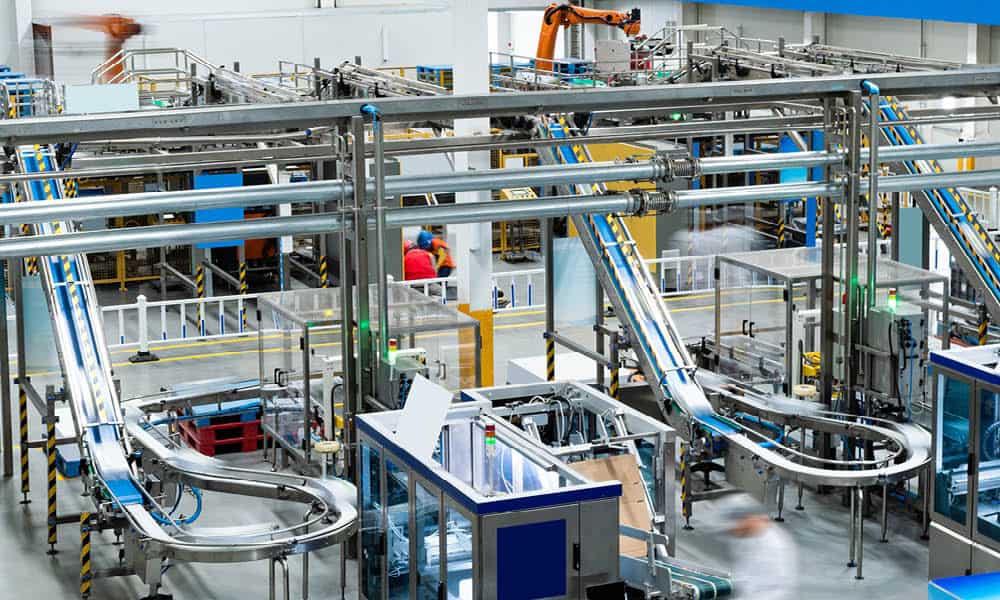
Product design, processes and partnerships optimize circularity to close the supply chain and manufacturing loop.

TAKEAWAYS:
● Consumers are demanding more circularity, so leading manufacturers are using circular models to reduce risk, unlock new revenue and build more resilient supply chains.
● Circular product design and digital twins are helping manufacturing optimize every lifecycle phase, from sourcing to end-of-life recovery.
● Collaboration across ecosystems is essential to scale circular operations and shared innovation.
What is a “Circular Economy” and why is it important now?
For more than 15 years, the Ellen McArthur Foundation has been working globally with businesses, academia, policymakers and institutions to accelerate the shift away from the traditional linear economy. As a global leader in this space, their definition of the core principles behind a circular economy are solid:
- Eliminate waste and pollution
- Circulate products and materials (at their highest value)
- Regenerate nature
All three are important, with the first two probably resonating the most with supply chain and manufacturing stakeholders. However, consumers are putting more pressure on organizations to focus equally on all three. This is part of why the circular economy today is an increasingly important topic; regardless of changing policy and regulation, the general global sentiment continues to drive buying behavior to brands and products that are focused on environmental stewardship.
Of course, pure operational issues are just as important, and that is what most of this article will focus on. Natural resources are being depleted at unsustainable rates, and governmental regulation (such as the EU’s Circular Economy Action Plan) are mandates that cannot be ignored. The circular economy has become a strategic imperative to compel manufacturers to rethink product design, operational models and value chain collaboration to maximize material value, reduce waste and regenerate natural systems.
Business case
Happily, implementing these core principles can unlock both economic advantage and sustainability leadership in increasingly resource-constrained (and competitive) markets.
Our previous linear model of “make-take-use-waste” was simple and efficient to follow, allowing for rapid industrialization and introduction of new products at low cost—a compelling list of benefits for manufacturers. However, while there are some additional costs in upfront investment in circular methods, many of the same benefits can still be realized while also achieving new sustainability and resiliency goals. For example:
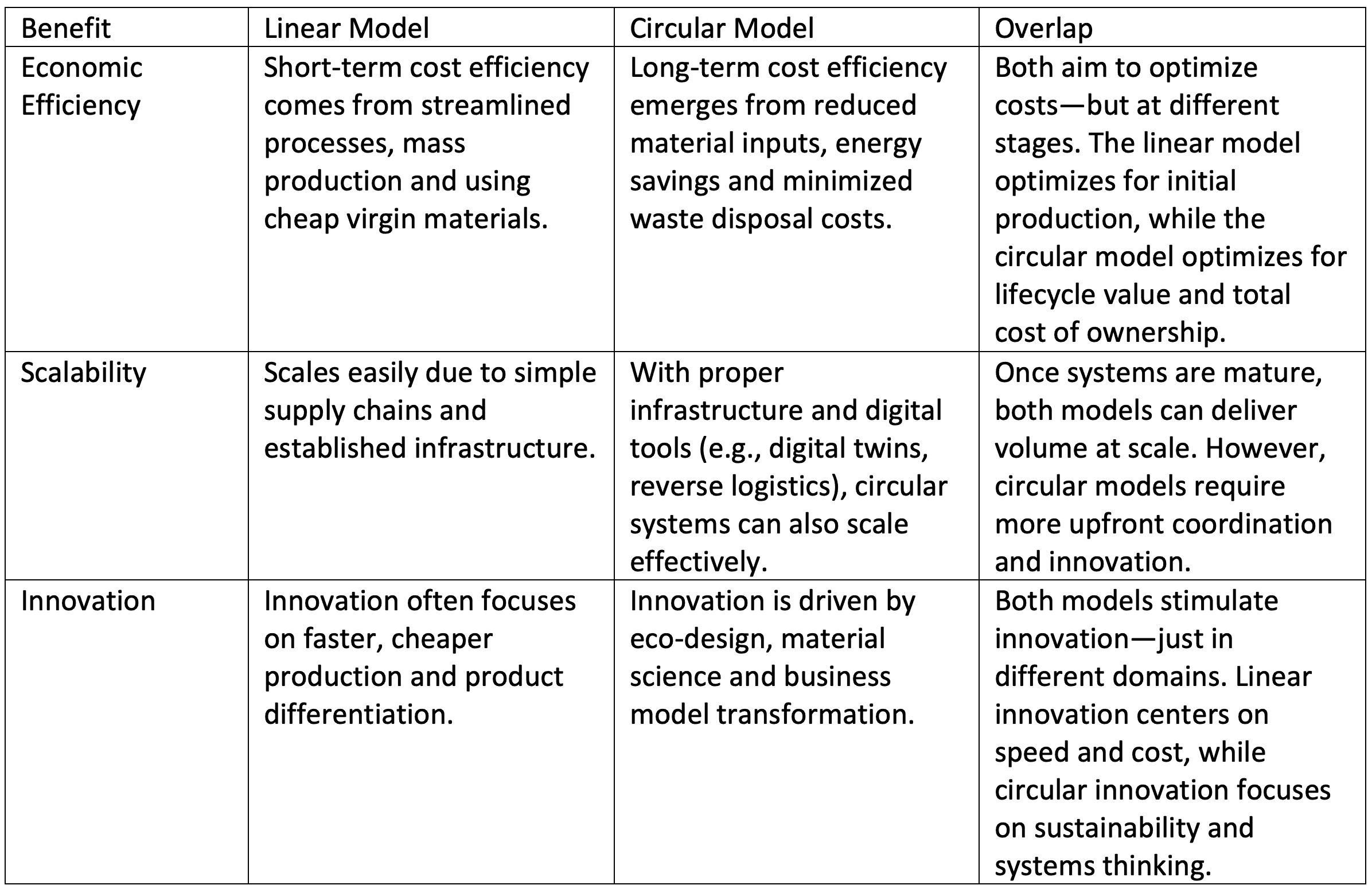
Although the results are similar, the drivers and (more importantly) the sustainability of the benefits are quite different. The linear model tends to focus on short-term benefit and is completely consumption-driven, compared to the longer-term benefit of the circular model, which is regenerative and systems-oriented.
In the last decade, there are many examples of companies, in all sorts of industries, developing new business models based upon this, such as HP’s closed-loop ink cartridge recycling, Caterpillar’s “Cat Reman” parts refurbishment, and Philips’ “lighting as a service” program.
Even disregarding mandates for change, the circular economy protects profitability and continuity by reducing dependency on volatile raw materials and turning waste into value. In short, it is not just good for the planet, it is a smart and resilient way to do business.
Key levers of change
There are many areas where manufacturers can start to transform operations from linear to circular. Each has pros and cons relative to the investment and outcomes, and many require collaboration across organizational departments and executive level commitment to change. However, they all represent areas where companies are already taking steps in leading the way to more sustainable operations.
1. Circular Product & Process Design
For most industries, this is the most important step to focus on. The vast majority of a product’s lifetime environmental footprint is “locked-in” during the design phase, long before the start of manufacturing.
Leading companies are focusing design efforts on durability and modularity during the “in-use” life of the product, and then disassembly and material separation at end-of-life. This has the potential to increase the cost and time attributed to design and engineering and might also increase manufacturing costs due to retooling. But there are also potential upsides for “long-tail” revenue related to spares or upgrade kits and, of course, the increasing brand equity with savvy consumers.
2. Responsible Material Sourcing & Substitution
The automotive Industry is a good example of historically straightforward supply chains becoming increasingly complex and dependent on rare-earth materials now that cars are becoming more electrified and electronic. Regulation on “responsible supply” is forcing manufacturers to put more focus on traceability of source and virgin raw materials.
Using supplier scorecards, manufacturers can see the impact of their sourcing decisions by the weighting of recycled content, renewable energy used in supply, and ethical and social responsibility of suppliers. Additionally, using AI to optimize supply based upon these criteria, manufacturers can lower exposure to supply volatility while also achieving higher gains in sustainability.
3. Zero-Waste, Resource-Efficient Operations
In metals and other heavy-industry segments, energy and materials represent a majority of the manufacturing costs of finished goods. Every kilogram of scrap is lost margin and an unnecessary increased environmental footprint.
Innovation in lean and digital manufacturing, and the use of next-generation manufacturing operation management systems, can have a dramatic impact on production quality and efficiency. Also, optimal scheduling of energy-intensive processes (heat treatment, ovens, etc.) can increase OEE while still maintaining customer service levels. These methods will likely require new investment in process controls and technology but deliver immediate cost reduction and sustainability benefits when in place.
4. Remanufacturing & Refurbishment Loops
There is still heavy debate about exactly how “green” EVs are. It should be noted, however, that this is a good industry to highlight the potential of remanufacturing. Tesla had a vision of old cars driving into one side of a factory and being refurbished into new cars driving out the other. While not quite a reality, most of the materials inside battery cells are recycled and repurposed, and restoring other types of industrial equipment can preserve up to 85% of the embedded material and energy, while also reducing new manufacturing costs and enabling potentially high-margin aftermarket business.
By implementing reverse flows of core material, building dedicated tear-down lines and requalification processes, manufacturers could see up to 65% cost savings in material. Additionally, while recycled inventory might be more uncertain, the benefit of near-zero lead times for supply could be substantial.
5. Reverse Logistics & Take-Back Infrastructure
The circular economy requires a circular logistics flow, and manufacturers need reliable ways to retrieve the products and materials at their end-of-life stage. For consumer products, there is the opportunity to provide drop-off kiosks or stage repair hubs at strategic locations. Alternatively, partnerships with existing carriers and 3PLs might provide easy ways for the return of salvageable items. It is also possible for manufacturers that own distribution to find ways to fill truck space without adding new logistics capacity.
Even with “coincidental” logistics capacity, there will be an increase in collection and handling costs, but also an opportunity to provide additional material feeds and stock via remanufacturing and refurbishment lines. This is also another highly visible area of operations that helps boost brand loyalty with consumers.
There are other, more transformational areas, such as new business models (product-as-a-service and sharing models) where manufacturers retain ownership of their assets. These methods are self-reinforcing because the profit incentive shifts from selling more units to maximizing asset life and recovery. This therefore drives further investment in better product and process design.
The other thing to consider is the dependency and symbiotic value of these areas. For example, better product design greatly improves the efficiency of remanufacturing. Similarly, better manufacturing operations can help with history and traceability of component materials for end-of-life reuse and refurbishment. Manufacturers should look at these as a total playbook that works together instead of as isolated initiatives.
Digital twins
Technology advances have greatly aided the circular economy’s scope and reality. In particular, the digital twin has become pivotal in developing digital models of products, production systems and supply chains.
The circular economy (like any new process) takes time and experimentation by manufacturers to turn ideas into reality. Digital twins have become the virtual universe where manufacturers can rapidly explore the art of the possible for new circular design, manufacturing and supply chain models.
Referring back to the previous example of circular product design, the digital twin of the product provides engineers unlimited ability to design products not only in the context of efficient manufacturing but also for efficient supply, re-manufacturing and disassembly. Manufacturers can compare dozens of different designs, integrated with the impact on sustainability, supply and production facilities, in hours instead of months. No previous generation of CAD/CAE has been able to orchestrate the processes that exist across the entire product lifecycle.
Because the digital twin represents the product and materials in precise detail, it is possible to experiment with modular design architecture and simulate how easily components can be removed and replaced. It is also possible to experiment with different materials that are recycled, using simulation to determine if the product strength and specs can still be achieved without using virgin-materials. Many manufacturers are already using digital twins for the “virtual build” process to validate manufacturability, so why not use the same process for “virtual disassembly” to ensure the material value can be reclaimed effectively at end-of-life?
The other significant capability of the digital twin is that it digitally documents the lifecycle of the product, using real-world data to help support circular methods and processes:
- Bill of Materials: to enable accurate sorting, recycling and reverse logistics
- Material Metadata: to highlight hazardous content, carbon footprint and compliance data
- Design Intent: to support virtual disassembly and remanufacturing
- Work Instructions: for both assembly and disassembly efficiency and safety
- In-Service Data: guides refurbishment and resale valuation
- Serial-Level Data: to support warranty management, digital passports and second-life usage
Besides the digital twin of the product, the digital twin of the production systems also contributes to the circular economy—especially in the area of waste and energy.
To evaluate new manufacturing methods that might be needed for different product designs or for recovery and disassembly, manufacturers can precisely simulate machinery, lines or entire facilities using precision virtual models to mitigate the risks involved in change. The level of detail in these models can include potential energy requirements, predictive maintenance that could reduce scrap and rework, and manufacturing process simulation to optimize the build and remanufacturing processes.
Without digital twins, true circular optimization across the entire product lifecycle would be impossible. The twin turns circular design from “best guess” to data-driven decision-making.
Making the circle bigger
Most of the previous examples are written in the context of what a manufacturer, alone, could consider or implement in its own business, but as manufacturers start to develop their own strategies, it is possible to see how new ecosystems could be formed, and provide benefits in different areas.
Shared Investment
Part of the circular ecosystems’ benefit is that some of the investment can be shared. Processes like reverse logistics can be particularly costly, and developing partnerships with shared infrastructure reduces per-unit costs and emissions and also improves route optimization and asset utilization.
For common materials, the cost of recycling processes can also be shared by manufacturers to reduce the need for individual capital investment.
Shared Resiliency
Circular networks are inherently less dependent on linear flows that are vulnerable to disruption (especially in global supply chains). Having nearby material flows enables manufacturers to operate more locally and develop better agility against change. That is also true for local disruption—for example, collaborative reverse logistics ensure material flow even if one node of the network is disrupted.
Generally, keeping materials “in-network” reduces the reliance on volatile global markets and enhances self-sufficiency. By collaborating and pooling within the network, all members benefit from a more resilient supply chain.
Shared Innovation
Remember the saying: “One person’s trash is another person’s treasure”? Cross-industry material flows are already a key part of the circular economy with many examples:
- Sugar cane waste -> bio-polyethylene for soda bottles
- Spent brewery grain -> livestock feed and skincare additives
- Recycled textiles -> natural fibers in car interiors
But shared innovation goes beyond making use of the known, it enables manufacturers to partner with different types of external businesses to collaborate on the design of products specifically developed for new circular economies. Shared innovation also leverages shared platforms that manage remanufacturing and resale and can share data tracking to help with regulatory compliance across industries.
Together, organizations can truly help to shape new business models and set standards on material tracking, digital passports and other innovation that helps everyone in the industry, while also promoting a company and its brand as a global leader.
Conclusion
There is a lot that manufacturers can do. Unlike innovation in digital manufacturing, where ROI has been documented and proven for a decade, circular economy initiatives can be more uncertain. The ROI can be a little “softer,” and moving from traditional linear models means tough changes in culture, process, systems, manufacturing and supply chains.
Manufacturers are not yet forced to move from the linear model, but the growing call for sustainable industrial operations is making it compelling for many, with increasing regulation and sentiment making it an urgent priority for some.
For those that are innovating, the benefits can be significant. Industry examples are helping to make the ROI more tangible and credible, and more companies innovating means more opportunities for collaborative ecosystems of circular economies.
As a key enabler, digital twin technology provides the tools for manufacturers to simulate and optimize every scenario and opportunity in the circular model. Many manufacturers embarking on the journey are facing new decisions and trade-offs between traditional operational metrics and sustainability metrics that they have likely not tracked before. The digital twin is the universe where unlimited questions can be asked and precise, rapid answers are given.
Finally, it is important to remove one’s business hat for a moment and focus purely on the third core principle of “regenerating nature.” After all, this is where the circular economy originated. It is much easier to be wasteful and consumptive, but there should be concern about the future generations that will inherit the results of decisions that are made today. The natural world faces increasing strain on land, air and oceans. Circular practices not only reduce harm, they aim to do more good. By regenerating soils, protecting biodiversity and enabling companies to operate in harmony with natural systems, conditions are created where business, humanity and the planet can all thrive.
To hear more on creating new value chains and optimizing material flows, listen to a brief “ask the expert” video from Dassault Systèmes, or even experience an interactive workflow that shows how optimized supply planning can enable sustainable operations. M
About the author:

Adrian Wood is strategic business development and marketing director for Dassault Systèmes.
Digital Tools for Manufacturing Resilience

Investments in technology can help manufacturers navigate economic uncertainty and geopolitical challenges

TAKEAWAYS:
● Despite economic uncertainty, tech spending is rising. Some U.S. manufacturers are increasing their investment in cloud, GenAI, 5G and other technologies to drive ROI and resilience.
● Digital tools are helping to build resilience. Supply chain planning software and simulation technologies are helping manufacturers optimize processes and adapt faster.
● Workforce strategies are increasingly going digital. New tools support digital talent management and targeted upskilling.
Some U.S. manufacturers have continued investing in digital technologies over the last several years despite economic uncertainty, rising costs and a challenging business climate. For instance, technology investments made by manufacturing companies accounted for 30% of their operating budget in 2024, compared with 23% in 2023, with cloud, GenAI and 5G being the top three technologies with the greatest ROI.
Furthermore, some manufacturers are increasingly turning to digital tools to help enhance resilience, improve supply chain visibility and address workforce needs, which could be particularly important in the current dynamic environment. According to Deloitte’s 2025 Manufacturing Industry Outlook, manufacturers anticipate a complex business climate for the remainder of 2025 due to high costs, potential policy changes following global elections and the potential for ongoing geopolitical uncertainty. Raw material costs are expected to rise further, and policy shifts related to trade, tariffs and adjustments to legislation could impact supply chains and investments. Digital technologies have emerged as tools to help navigate these complexities, including in these three areas:
- Supply chain planning and visibility
- Simulation
- Workforce management
Supply Chain Planning and Visibility
Manufacturers are expected to face continued supply chain risks, disruptions, potential delays and elevated costs due to several contributing factors. Ongoing labor shortages from production to transportation to warehousing could contribute to delays and higher costs throughout the value chain. Rising input costs and potential trade policy changes further complicate supply chain management. In recent years, these and other factors have led some organizations to shift their supply chain strategy from cost minimization to balancing cost optimization with resilience. To help achieve this, several manufacturers have reconfigured their supply chains by reshoring portions of their production, nearshoring and growing trade with countries offering cost advantages.
Focused investment in digital tools that enable advanced supply chain planning techniques, better collaboration with suppliers, simulation and enhanced visibility may provide an additional boost. In a recent study, 78% of manufacturers surveyed indicated that they have implemented or are planning to invest in supply chain planning software.
Partnering closely with suppliers, which digital tools can help support, may also be important to increase domestic capacity and improve resilience. Not only can it facilitate knowledge transfer and enhanced visibility, but it could be particularly important in cases where suppliers need to make investments in new technology, equipment, workers or even expand their facility. In a similar vein, industry leaders are expected to evolve their digital applications for supply chain visibility to resolve issues ranging from parts and labor shortages to concerns with quality and reliability of parts.
Simulation
The use of simulation in the manufacturing industry could also continue to grow, especially given the potential for business disruptions, the need to control costs, and the continued proliferation of AI tools. Simulation technologies such as causal AI can support production line simulation, process simulation and business scenario simulation, which appear to be increasingly important for optimizing workflows, reducing bottlenecks and enhancing decision-making.
For instance, business scenario simulation allows manufacturers to use an enterprise model to simulate challenges—such as employee absences, raw materials that arrive with quality issues and supply chain disruptions—and identify potential actions to optimize the response. The AI/ML and digital revolution can also help to revamp sustainment and aftermarket practices, with an emphasis on enhancing both operational efficiency and customer experience.
Upskilling and Retaining the Workforce Necessary to Support Reshoring
The makeup of the U.S. manufacturing industry, with its increasing focus on advanced manufacturing and push toward smart operations, requires technical expertise and advanced training. A 2024 study conducted by Deloitte and The Manufacturing Institute found that roles that require higher-level skills could grow the fastest between 2022 and 2032, and that a combination of technical manufacturing, digital and soft skills will likely be required. The study also underlines the role of digital tools to help meet workers’ changing expectations, reduce turnover and plan for demand volatility.
Companies seem to be increasingly focusing on leveraging digital tools that offer advanced talent planning and workforce management capabilities. These tools can also support manufacturers taking a skills-based approach, which may be increasingly important for broadening the talent pool. AI-based management of employee skills and deployment is emerging as a core capability, utilizing skills matrices and demand forecasting to optimize workforce planning and identify upskilling needs. A recent study indicates that by 2030, AI-based management of employee skills and how people are deployed to meet business needs will be a core capability. If gaps are identified, companies could offer upskilling opportunities for existing employees, which can increase retention, or work within the talent ecosystem to find and develop workers with the requisite skills. Taking this approach could also enable tailored upskilling that helps prepare employees for future work, for example, working alongside advanced technology such as GenAI.
Conclusion
Manufacturers are expected to navigate a challenging and uncertain business climate in 2025 due to high costs, potential policy changes from global elections, and continued geopolitical uncertainty. Focusing on supply chain visibility, simulation and digitally enabled workforce strategies can help companies build resilience, optimize operations and work toward competitiveness for the remainder of 2025 and beyond. By strategically leveraging digital tools, manufacturers can turn challenges into opportunities and position themselves for success in a changing industrial landscape. Moreover, digital transformation, automation and smart operations can help with cost reduction and may be important to offset potential impacts of tariffs. M
About the authors

Kate Hardin is the executive director of Deloitte’s Research Center for Energy and Industrials.

John Morehouse is the research leader for industrial products manufacturing in the Deloitte Research Center for Energy & Industrials.

Kruttika Dwivedi is a manager for the Deloitte Research Center for Energy and Industrials.

Anuradha Joshi is a senior research analyst at the Deloitte Research Center for Energy & Industrials.
This article contains general information only and Deloitte is not, by means of this article, rendering accounting, business, financial, investment, legal, tax, or other professional advice or services. This article is not a substitute for such professional advice or services, nor should it be used as a basis for any decision or action that may affect your business. Before making any decision or taking any action that may affect your business, you should consult a qualified professional advisor.
Deloitte shall not be responsible for any loss sustained by any person who relies on this article.